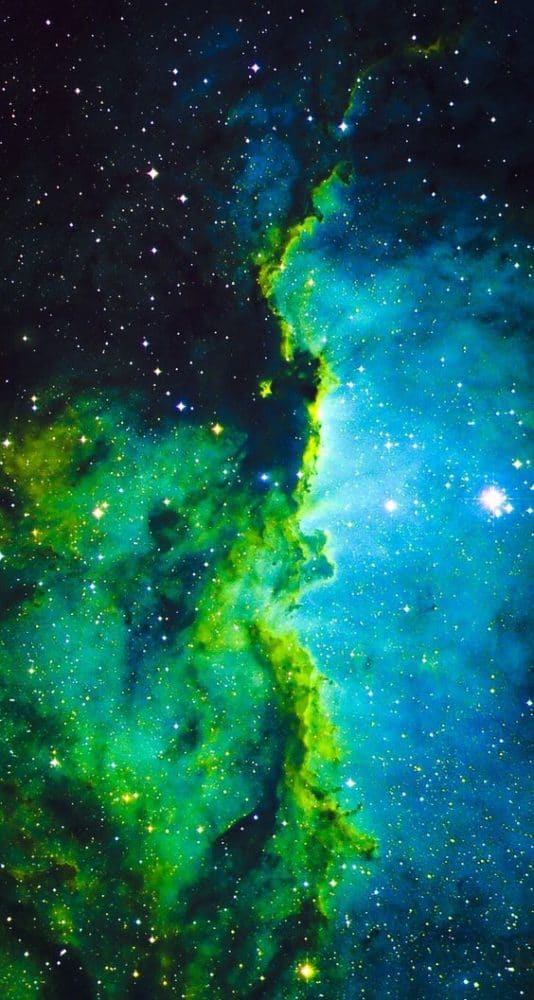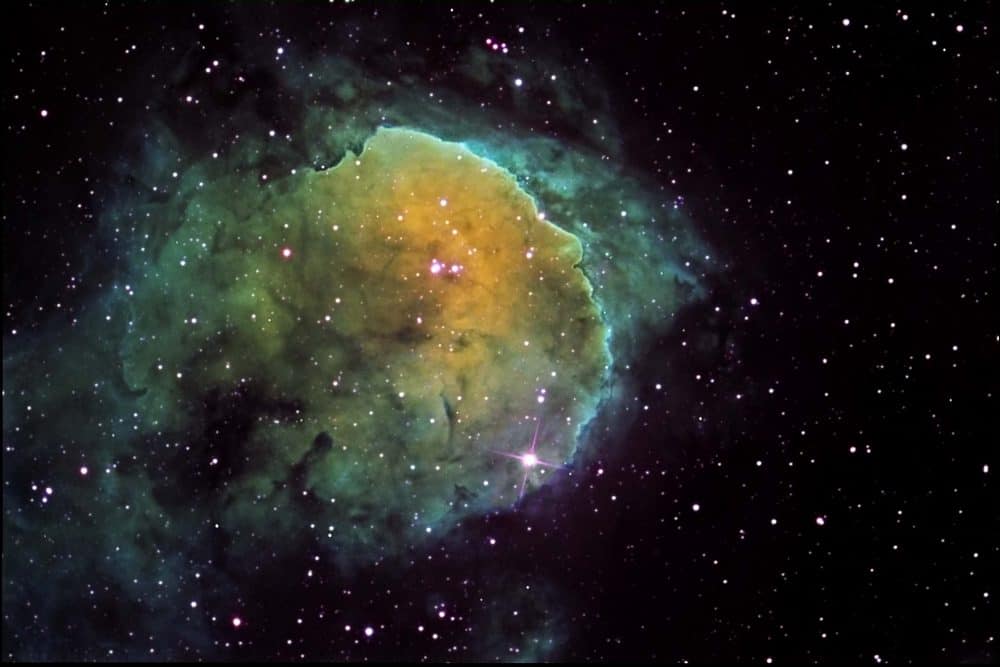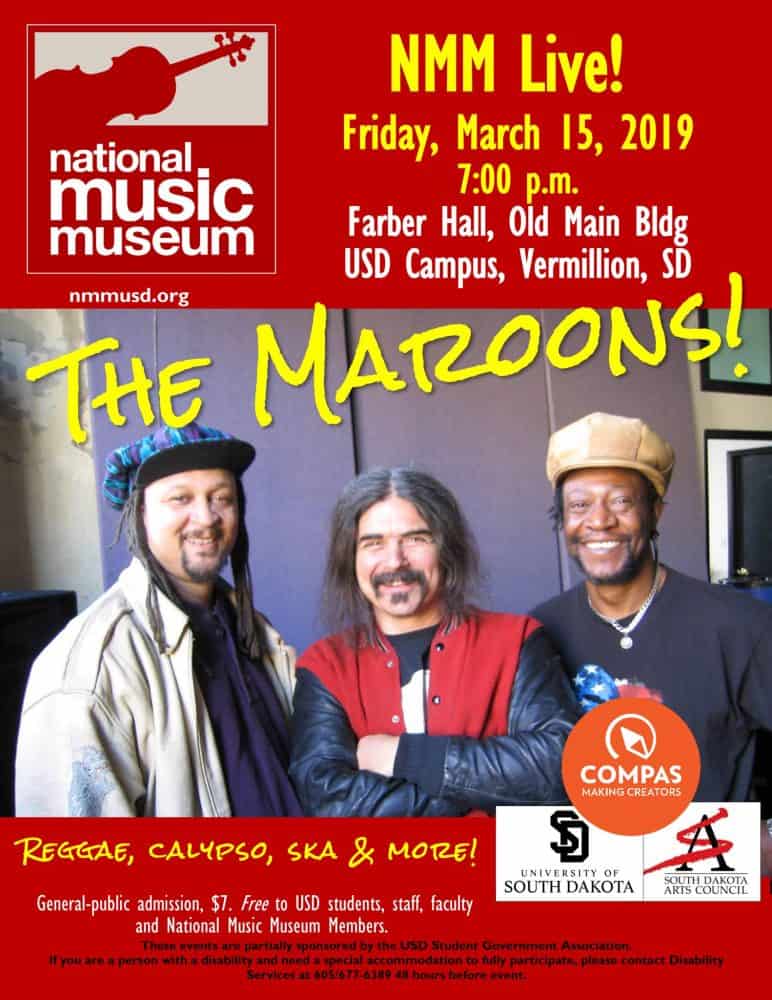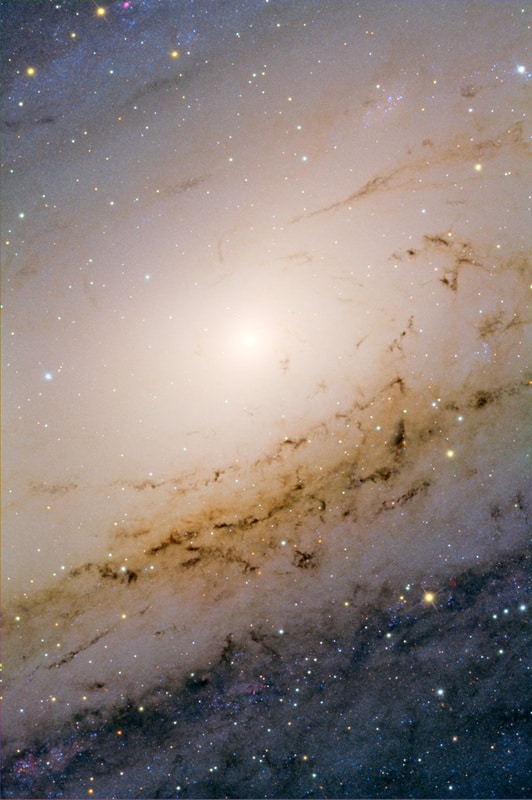Blog
NGC 6188 is an emission nebula located about 4,000 light years away in the constellation Ara. The bright open cluster NGC 6193, visible to the naked eye, is responsible for a region of reflection nebulosity within NGC 6188.
NGC 6188 is a star forming nebula, and is sculpted by the massive, young stars that have recently formed there – some are only a few million years old. This spark of formation was probably caused when the last batch of stars went supernova.
more...Lovie Lee (March 17, 1909 – May 23, 1997) was an American electric blues pianist and singer. He is best known for his work accompanying Muddy Waters. He also recorded a solo album, in 1992. He was the “adoptive stepfather” of the bluesman Carey Bell and thus the “grandfather” of Lurrie Bell.
He was born Edward Lee Watson in Chattanooga, Tennessee, and grew up in Meridian, Mississippi. He taught himself to play the piano and began performing in various churches and at rodeos and vaudeville shows. He had already acquired the nickname Lovie from a doting aunt. He found part-time employment playing with the Swinging Cats in the early 1950s. The group included Carey Bell, who Lee took under his “fatherly” protection, and together they moved to Chicago, in September 1956. Lee worked during the day in a woodworking factory, and for many years played in the evening in numerous Chicago blues nightclubs, including Porter’s Lounge. He was well known around Chicago for his blues piano playing. He later worked as an upholsterer, but he kept together his backing band, the Sensationals.
more...Nathaniel Adams Coles (March 17, 1919 – February 15, 1965), known professionally as Nat King Cole, was an American jazz pianist and vocalist. He recorded over one hundred songs that became hits on the pop charts. His trio was the model for small jazz ensembles that followed. Cole also acted in films and on television and performed on Broadway. He was the first African American man to host an American television series.
Nat King Cole was born Nathaniel Adams Coles in Montgomery, Alabama, on March 17, 1919. He had three brothers: Eddie (1910–1970), Ike (1927–2001), and Freddy (b. 1931), and a half-sister, Joyce Coles. Each of the Cole brothers pursued careers in music. When Nat King Cole was four years old, the family moved to Chicago, Illinois, where his father, Edward Coles, became a Baptist minister.
Cole learned to play the organ from his mother, Perlina Coles, the church organist. His first performance was “Yes! We Have No Bananas” at the age of four. He began formal lessons at 12, learning jazz, gospel, and classical music on piano “from Johann Sebastian Bach to Sergei Rachmaninoff.
https://www.youtube.com/watch?v=UEMT0Ss4qSg
more...Sayed Darwish (Egyptian Arabic: سيد درويش, IPA: [ˈsæjjed dæɾˈwiːʃ]; 17 March 1892 – 15 September 1923) was an Egyptian singer and composer who was considered the father of Egyptian popular music and one of Egypt’s greatest musicians and its single greatest composer. Darwish died of a heart attack in Alexandria on 15 September 1923, aged 31. He is still regarded as a noble and adored figure in Egyptian history.
Sayed Darwish was born in Kôm el-Dikka Alexandria on 17 March 1892. During his childhood his family could not afford to pay for his education, so he was sent to a religious school where he mastered the recitation of the Quran. After graduating from the religious school and gaining the title Sheikh Sayyed Darwish, he studied for two years at al-Azhar, one of the most renowned religious universities in the world. He left his studies to devote his life to music composition and singing, then entered a music school where his music teacher, Sami Efendi, admired his talents and encouraged Darwish to press onward in the music field.
more...NGC 3324 is an open cluster in the southern constellation Carina, located northwest of the Carina Nebula (NGC 3372) at a distance of 7,560 ly (2,317 pc) from Earth. It is closely associated with the emission nebula IC 2599, also known as Gum 31. The two are often confused as a single object, and together have been nicknamed the “Gabriela Mistral Nebula” due to its resemblance to the Chilean poet. NGC 3324 was first catalogued by James Dunlop in 1826.
more...Jerry Jeff Walker (born Ronald Clyde Crosby; March 16, 1942, Oneonta, New York[1]) is an American country music singer and songwriter. He is best known for writing “Mr. Bojangles“.
Walker’s maternal grandparents played for square dances in the Oneonta area, with his grandmother, Jessie Conroe, playing piano, and her husband playing fiddle. During the late 1950s, Crosby was a member of a local Oneonta teen band called The Tones.
more...Frederick Neil (March 16, 1936 – July 7, 2001) was an American folk singer-songwriter in the 1960s and early 1970s. He did not achieve commercial success as a performer and is mainly known through other people’s recordings of his material – particularly “Everybody’s Talkin’“, which became a hit for Harry Nilsson after it was used in the film Midnight Cowboy in 1969. Though highly regarded by contemporary folk singers, he was reluctant to tour and spent much of the last 30 years of his life assisting with the preservation of dolphins.
Born in Cleveland, Ohio, and raised in St. Petersburg, Florida, Neil was exposed to music at an early age, travelling around the US with his father, who was a representative for Wurlitzerjukeboxes. Neil was one of the singer-songwriters who worked out of New York City‘s Brill Building, a center for music industry offices. While composing at the Brill Building for other artists, Neil also recorded six mostly rockabilly-pop singles for different labels as a solo artist. He wrote songs that were taken by early rock and roll artists such as Buddy Holly (“Come Back Baby” 1958) and Roy Orbison (“Candy Man” 1961).
https://www.youtube.com/watch?v=WBAOjKBLpqo
more...Thomas Lee Flanagan (March 16, 1930 – November 16, 2001) was an American jazz pianist and composer. He grew up in Detroit, initially influenced by such pianists as Art Tatum, Teddy Wilson, and Nat King Cole, and then by the newer bebop musicians. Within months of moving to New York in 1956, he had recorded with Miles Davis and on Sonny Rollins‘ landmark Saxophone Colossus. Recordings under various leaders, including the historically important Giant Steps of John Coltrane, and The Incredible Jazz Guitar of Wes Montgomery, continued well into 1962, when he became vocalist Ella Fitzgerald‘s full-time accompanist. He worked with Fitzgerald for three years until 1965, and then in 1968 returned to be her pianist and musical director, this time for a decade.
After leaving Fitzgerald in 1978, Flanagan then attracted praise for the elegance of his playing, which was principally in trio settings when under his own leadership. In his 45-year recording career, he recorded more than three dozen albums under his own name and more than 200 as a sideman. By the time of his death, he was one of the most widely admired jazz pianists and had influenced both his contemporaries and later generations of players.
Flanagan was born in Conant Gardens, Detroit, Michigan, on March 16, 1930. He was the youngest of six children – five boys and a girl. His parents were both originally from Georgia.
more...Big, beautiful spiral galaxy M101 is one of the last entries in Charles Messier’s famous catalog, but definitely not one of the least. About 170,000 light-years across, this galaxy is enormous, almost twice the size of our own Milky Way galaxy. M101 was also one of the original spiral nebulae observed by Lord Rosse’s large 19th century telescope, the Leviathan of Parsontown. M101 shares this modern telescopic field of view with more distant background galaxies, foreground stars within the Milky Way, and a companion dwarf galaxy NGC 5474 (lower right). The colors of the Milky Way stars can also be found in the starlight from the large island universe. Its core is dominated by light from cool yellowish stars. Along its grand design spiral arms are the blue colors of hotter, young stars mixed with obscuring dust lanes and pinkish star forming regions. Also known as the Pinwheel Galaxy, M101 lies within the boundaries of the northern constellation Ursa Major, about 23 million light-years away. Its companion NGC 5474 has likely been distorted by its past gravitational interactions with the dominant M101.
more...Ryland Peter “Ry” Cooder (born March 15, 1947) is an American musician, songwriter, film score composer, and record producer. He is a multi-instrumentalist but is best known for his slide guitar work, his interest in roots music from the United States, and his collaborations with traditional musicians from many countries.
Cooder’s solo work draws upon many genres. He has played with John Lee Hooker, Captain Beefheart, Ali Farka Touré, Eric Clapton, The Rolling Stones, Van Morrison, Neil Young, Randy Newman, David Lindley, The Chieftains, The Doobie Brothers, and Carla Olson & the Textones (on record and film). He formed the band Little Village. He also produced the Buena Vista Social Club album (1997), which became a worldwide hit. Wim Wenders directed the documentary film of the same name (1999), which was nominated for an Academy Award in 2000.
Cooder was ranked eighth on Rolling Stone magazine’s 2003 list of “The 100 Greatest Guitarists of All Time” (David Fricke’s Picks). A 2010 ranking by Gibson placed him at number 32.
Cooder was born in Los Angeles, California, to father Bill Cooder and Italian-American mother Emma Casaroli. He grew up in Santa Monica, California, and graduated from Santa Monica High School in 1964. During the 1960s, he briefly attended Reed College in Portland, Oregon. He began playing the guitar when he was three years old. He has had a glass eye since he was four, when he accidentally stuck a knife in his left eye.
more...Charles Lloyd (born March 15, 1938) is an American jazz musician. Though he primarily plays tenor saxophone and flute, he has occasionally recorded on other reed instruments, including alto saxophone and the Hungarian tárogató. Lloyd’s band since 2007 includes pianist Jason Moran, bassist Reuben Rogers, and drummer Eric Harland.
Charles Lloyd grew up in Memphis and was exposed to blues, gospel and jazz. He is of African, Cherokee, Mongolian, and Irish ancestry. He was given his first saxophone at the age of 9 and was riveted by 1940s radio broadcasts by Charlie Parker, Coleman Hawkins, Lester Young, Billie Holiday and Duke Ellington. His early teachers included pianist Phineas Newborn, Jr.and saxophonist Irvin Reason. His closest childhood friend was trumpeter Booker Little. As a teenager Lloyd played jazz with saxophonist George Coleman, Harold Mabern, and Frank Strozier, and was a sideman for Johnny Ace, Bobby “Blue” Bland, Howlin’ Wolf and B.B. King.
In 1956 Lloyd left Memphis for Los Angeles to earn a degree in music at the University of Southern California, where he studied with Halsey Stevens, whose speciality was Bartók. At night, he played in jazz clubs with Ornette Coleman, Billy Higgins, Scott LaFaro, Don Cherry, Charlie Haden, Eric Dolphy, Bobby Hutcherson and other leading west coast jazz artists. He also was a member of the Gerald Wilson big band.
more...Samuel John “Lightnin’” Hopkins (March 15, 1912 – January 30, 1982) was an American country blues singer, songwriter, guitarist and occasional pianist, from Centerville, Texas. Rolling Stone magazine ranked him number 71 on its list of the 100 greatest guitarists of all time.
The musicologist Robert “Mack” McCormick opined that Hopkins is “the embodiment of the jazz-and-poetry spirit, representing its ancient form in the single creator whose words and music are one act”.
Hopkins was born in Centerville, Texas, and as a child was immersed in the sounds of the blues. He developed a deep appreciation for this music at the age of 8, when he met Blind Lemon Jefferson at a church picnic in Buffalo, Texas. That day, Hopkins felt the blues was “in him”.[citation needed] He went on to learn from his older (distant) cousin, the country blues singer Alger “Texas” Alexander. (Hopkins had another cousin, the Texas electric blues guitarist Frankie Lee Sims, with whom he later recorded.) Hopkins began accompanying Jefferson on guitar at informal church gatherings. Jefferson reputedly never let anyone play with him except young Hopkins, and Hopkins learned much from Jefferson at these gatherings.
https://www.youtube.com/watch?v=DCSacpEIYWY
more...World Music on Flamenco Fridays
more...The Andromeda Galaxy (/ænˈdrɒmɪdə/), also known as Messier 31, M31, or NGC 224, is a spiral galaxy approximately 780 kiloparsecs (2.5 million light-years) from Earth, and the nearest major galaxy to the Milky Way. Its name stems from the area of the Earth’s sky in which it appears, the constellation of Andromeda.
The 2006 observations by the Spitzer Space Telescope revealed that the Andromeda Galaxy contains approximately one trillion stars, more than twice the number of the Milky Way’s estimated 200 to 400 billion stars. The Andromeda Galaxy’s mass is estimated to be around 1.76 times that of the Milky Way Galaxy (~0.8-1.5×1012 solar masses vs the Milky Way’s 8.5×1011 solar masses), though a 2018 study found that the Andromeda Galaxy’s mass is roughly the same as the Milky Way’s. The Andromeda Galaxy, spanning approximately 220,000 light-years, is the largest galaxy in the Local Group, which is also home to the Triangulum Galaxy and other minor galaxies.
The Milky Way and Andromeda galaxies are expected to collide in ~4.5 billion years, merging to form a giant elliptical galaxy or a large disc galaxy. With an apparent magnitude of 3.4, the Andromeda Galaxy is among the brightest of the Messier objects making it visible to the naked eye from Earth on moonless nights, even when viewed from areas with moderate light pollution.
more...More Posts
- Bumble Bee Slim
- Tchaikovsky
- Nexhmije Pagarusha
- World Music with l’Orchestre Afrisa International
- Daily Roots with Andy & Joey
- The Cosmos with NGC 3199
- David Friesen
- Leon Hughes
- Hasaan Ibn Ali
- Cliff Carlisle
- World Music Memorial for Amha Eshèté 74
- Daily Roots with Susan Cadogan
- Club Calabash 48 featuring mick laBriola
- The Cosmos with Strong Thermal Emission Velocity Enhancements (STEVEs)
- Stanley Cowell
- Kidd Jordan
- Blind Willie McTell
- John Dee Holeman Memorial
- World Music with Katerina Papadopoulou
- Daily Roots with Pinnacle Sound feat Marcus I & Fi




